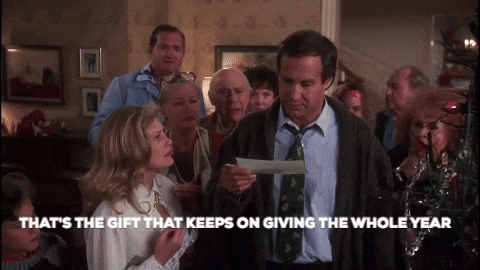The Webinar Strategy
Simple, recyclable and cost effective lead & demand gen strategy using webinars you can test in just 3-4 weeks.
Good marketing is just saying the same thing 100 different ways - so your market eventually will understand you and why they should buy from you.
Sounds easy - but incredibly hard to do in practice.
So when you find a message compelling and engaging for your audience - make sure to recycle and reuse as much as you can.
Just like a good movie or song - people love to hear their favourites more than once.
Couple this with the fact that early B2B SaaS startups (and B2B companies in general) need to be cost effective with your marketing- it pays to take 1 great message and spread it as far as you can for the biggest return-on-effort (ROE).
This is the basis of “The Webinar Strategy”.
The Webinar strategy is simple and is already being used by many leading B2B marketing teams today.
In a nutshell, it’s about taking an interesting and educational topic that your audience would love to hear a presentation on then:
Turn it into an online webinar,
Use the webinar registration to collect relevant prospect’s info,
Recording said webinar,
Repurposing the recording (both video, text and image),
Sharing it across all your channels (blogs, newsletter, YouTube, social media, etc) to drive awareness, interest and engagement,
Then using the registration info gathered as a list of warm leads your sales team can review and contact (as a soft introduction to ideal buyers).
Then repeat!
This is a strategy I’ve used across multiple B2B companies and is one I rely on (and recommend) a lot for a couple of reasons:
Webinars are a high quality, educational means to engage with a B2B audience (a great way to build trust and authority - critical for good lead gen).
It is a ‘value add’ means of connecting with your market (i.e. it gives them something as opposed to asking something from them).
You can ask valuable questions on the registration page to know more about attendees (e.g. “how do you currently manage X process” - give you insights if they are the right fit for you).
It’s relatively cheap (if not free).
It provides you with heaps of content for very little effort.
You can use it to collaborate with partners in your industry to get cross-audience exposure and grow both brands/followings.
It builds an audience and helps nurture the 97% of B2B buyers who aren’t ready to buy yet.
Whilst there are a million ways to do this, here Is how I typically run The Webinar Strategy:
1. Choose the Right Topic
Your webinar topics should align with what your audience cares about - educational, entertaining, or inspiring.
The best topics address your buyers’ pain points and interests, making them eager to register. Think about what will keep them engaged and position you as a valuable resource.
If you're not sure, ask them directly via polls, surveys, or past customer insights. The key is to focus on what they already want to learn rather than just what you want to teach.
If the topic isn’t compelling, no one will sign up. Your audience needs relevant, engaging, and useful content that speaks to their needs.
For example - Topics highlighting the importance of webinars… 🤷♂️
Educational Example: “How to run the perfect webinar for lead gen.”
Entertaining Example: “I ran a webinar with 10,000 attendees, and it went horribly wrong - here’s why.”
Inspiring Example: “How webinars helped me build my first $1 million ARR.”
2. Creating a Brief
A webinar brief is a one-page summary of the event’s purpose, key talking points, and logistics.
This keeps everyone aligned, simplifies planning, and helps with promotion.
A clear brief also makes it easier to pitch the idea to potential partners or speakers as well as get buy-in from your internal team.
Without a structured plan, webinars can become disorganized or miss key points that the audience cares about. A brief ensures everyone is on the same page, making execution seamless.
How I structure my brief:
Title & Description – Clear, compelling, and benefit-driven.
Agenda – Bullet points of key discussion topics and questions.
Guest Speakers – List guests, their credentials, and talking points.
If giving this to a guest - give them sections to fill out including their bio, photo, links to their website and LinkedIn, as well as any topics they might ask to stay away from (i.e. taboo points to avoid - competitors).
Date & Time – Ideal for your audience (Thursdays at lunchtime often work well. More stats on that here).
Target Audience – Define exactly who this is for and why they should care.
Key Takeaways – What attendees will learn and how it benefits them.
Usage - how the content will be used and repurposed (tell them it’s recorded and where you will be sharing this later).
3. Finding Partner Guests (Optional, But Highly Effective)
Strategic partnerships can significantly grow your reach by leveraging another company’s audience.
They can also be a draw card if they are an expert in a specific field your audience cares about.
The right partner should have a similar target audience but not be a direct competitor.
Co-hosting a webinar means shared promotion, increased credibility, and greater engagement.
Collaboration also reduces the effort required to promote and execute the webinar.
Important points:
Find complementary brands – Not competitors, but those targeting the same audience.
Example: A SaaS company partnering with a consulting firm on “How to Optimize Your Sales Process.”
Look for industry influencers – Individuals with a strong, engaged following.
Involve happy customers – Let them share their success stories (awesome for case studies if they can involve your product).
Split responsibilities – One partner can manages promotion, the other handles the content.
Offer clear value to the partner – Highlight why partnering benefits them (cross-promotion, audience growth). You may need to sell it to them.
4. Building the Registration Page
Your registration page is your sales pitch for why someone should attend.
A compelling headline, concise description, and clear CTA can dramatically improve sign-ups.
Use this step to ask the right questions - just enough to qualify leads without creating friction.
If your registration page isn’t convincing, you won’t get attendees.
Important points:
Write a compelling headline – Quickly communicate the webinar’s value.
Example: “Why 9 in 10 webinars DON’T generate good leads…”
Keep the description short & benefits-focused – Bullet point what they’ll learn.
Use speaker credibility – Feature their names, titles, and a short bio.
Ask only 1-2 qualifying questions – More than that reduces sign-ups.
Example: If I were selling fishing rods - “How often do you go fishing?” and “what type of finishing do you typically do” - these answers would give me good intel if they a fit for my product.
Include an incentive – Bonus guides, templates, or a free giveaway.
5. Promoting Your Webinar (Getting Registrants)
Your webinar promotion should start 2-3 weeks in advance and run across multiple channels.
Don’t just post once—use a mix of organic, paid, and partner distribution to maximise sign-ups.
Even the best webinar won’t succeed if no one knows about it.
Consistent, multi-channel promotion ensures you reach the right audience in different ways.
Important points:
Organic Social – LinkedIn posts, X threads, Facebook groups.
Paid Ads – LinkedIn Ads, Facebook Ads, retargeting campaigns.
Email Marketing – Personal invites + a sequence of reminders to subscribers.
Affiliate & Partner Sharing – Ask partners in your networks or associations to share it.
Direct Outreach – Personal messages to ideal attendees. Use your cold outbound email process, but instead of pushing for a meeting, ask for something less burdensome and value adding - like a free webinar! (you’ll see a much higher conversion rate).
6. Running & Recording the Webinar
Keep the webinar highly engaging so people stay until the end and take action.
The goal isn’t just to educate - it’s to create a memorable experience that makes them want to return for more.
Always record the session for repurposing.
Live engagement will introduce the market to the people and personalities behind the product, build trust, and helps create natural sales opportunities.
Important points:
Be interactive – Use live polls, chat Q&A, and direct audience participation.
Follow the 99-1 rule – 99% giving free value, 1% light product promotion at the end - but make sure it’s relevant to the discussion (or it will come across jarring and put the audience off).
Example - If you were explaining how to make the perfect cupcake for 29 mins, and in the last minute you mentioned people can buy the latest cupcake tray from you after the call - the momentum would probably be enough to some to take action.
Encourage real-time feedback – “What’s your biggest takeaway so far?”
Create FOMO – Offer an exclusive post-webinar bonus for live attendees.
7. Post-Webinar Follow-ups
The best webinars don’t stop after the session ends. Follow-ups are where you convert attendees into leads and keep them engaged with your brand.
In my experience, 30-65% of registrants won’t attend the live session - but they will be waiting for the recorded video to watch later. Make sure to send this.
People need multiple touchpoints before making a decision.
Then give the list of registrants/attendees to the sales team and rank them according to the questions you asked them (i.e. which are the better quality leads).
Careful not to pester people. You want to prompt them, but not deter them from coming back for the next webinar.
Important points:
Send a thank-you email – Include the recording, key takeaways, and bonus resources.
Segment attendees vs. no-shows – Different follow-ups for each group.
Pass leads to sales – Prioritise based on engagement level (e.g. who asked questions, who was there the whole time, who asked for the recording).
Don’t spam – One follow-up + a gentle reminder is enough.
8. Recycling the Recording for More Content
This is the magic of The Webinar Strategy.
Your webinar recording is a goldmine of content that can be repurposed across multiple formats.
This extends the ROI of your webinar and keeps your audience engaged long after the event.
You put in the effort - so maximise it.
A typical recycling process could look like:
Upload recording to YouTube (good for a source of free sharable links, if you set it to ‘public’ it also makes it more discoverable for others to search and see).
Turn the webinar into a blog that covers the same topic and tells the same story.
Use something like eightify to summarise and build a blog from on your website. This can help drive additional SEO to make you more discoverable
It can also act like a library of webinar for those who come along later and want to re-watch.
Embed the recorded YouTube link into your blog to keep them on your site for longer (better SEO).
Make sure to add the right CTA at the bottom of your blog to direct people towards your LEEP.
Use the blog to create a newsletter and send it to your subscriber base for those who didn’t register (make it easy for them to reshare this).
Cut up the video into smaller 1-5min video clips and use them for your organic social media.
Cut them into each valuable takeaway point that was discussed.
Each clip needs to be able to stand alone and tell a story.
When posting these, make sure to add the link to your blog in the comments where the recording is found to help increase blog traffic.
Then… Repeat to build more and more lead gen momentum.
Ideally as often as possible.
People usually only need 2-3 weeks notice time to book in a webinar. Any more is unnecessary in my opinion.
Remember - Good marketing is just saying the same thing 100 different ways - so that your market will (eventually) understand you and why they should buy from you.
The Webinar Strategy is a great way to do this.
I have built this process for many companies - so reach out if you would like help getting your Webinar strategy started.
Please ❤️like this post if you want to read more like this!








Have been hooked on this idea since Russell Brunson revealed it as his strategy to make $1 Million annually...
But life tends to pull me in a ton of different directions to keep me from remembering to act.
Thanks Alex for inspirational reminder!
Saving this one to my to do list. Thank you!